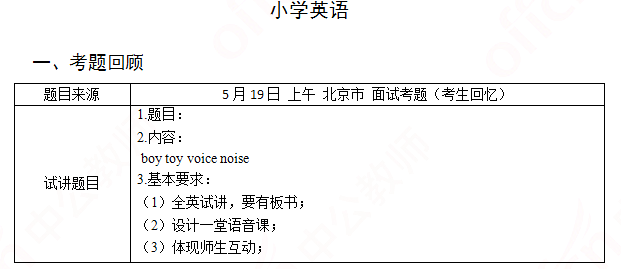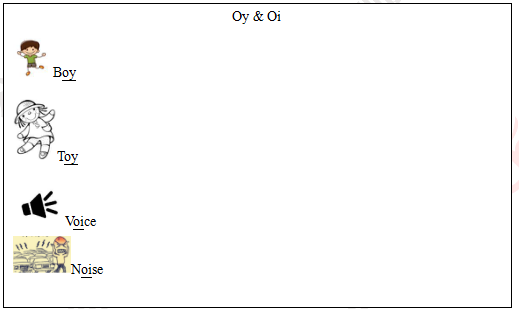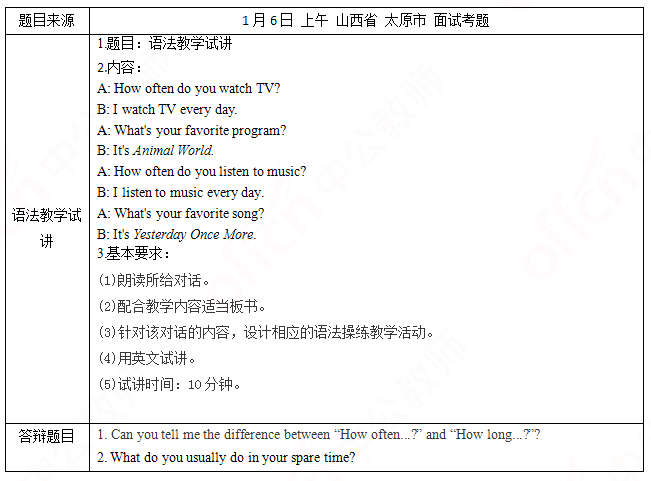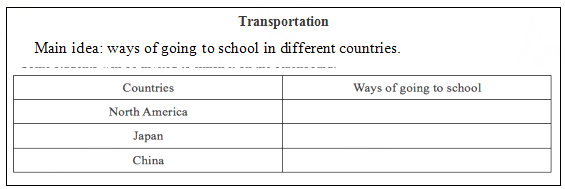--How many boy students are there in your class? --There are __________girls as boys.A.three times many as B.many as three times C.as many three times D.three times as many
题目
--There are __________girls as boys.
B.many as three times
C.as many three times
D.three times as many
相似考题
更多“--How many boy students are there in your class? ”相关问题
-
第1题:
How many workmen do you employ at your factory? (英译汉)
参考答案:你们厂雇用多少工人?
-
第2题:
How many people _____ in your family?A.are there
B.there are
C.there is
D.is there
答案:A
-
第3题:
( )I don’t know __________.
A.how often he visits his grandparents
B.how soon will he come back
C.how many students are there in his class
D.how long is the bridge
正确答案:A
-
第4题:
How many liaisons of sound are there in the sentence "I'm an English boy"A.one
B.two
C.three
D.four答案:B解析:考查连读知识。liaison意为“连音”,当一个单词后面紧跟一个以元音开头的单词时,则该单词最后的原本不发音的辅音就发音,与元音连读。本句中1’m aD和aD English均为连音,故选B。 -
第5题:
Text 2 For years,studies have found that first-generation college students—those who do not havea parent with a college degree—lag other students on a range of education achievement factors.Their grades are lower and their dropout rates are higher.But since such students are most likely to advance economically if they succeed in higher education,colleges and universities have pushed for decades to recruit more of them.This has created“a paradox”in that recruiting first-generation students,but then watching many of them fail,means that higher education has“continued to reproduce and widen,rather than close”an achievement gap based on social class,according to the depressing beginning of a paper forthcoming in the journalPsychological Science.But the article is actually quite optimistic,as it outlines a potential solution to this problem,suggesting that an approach(which involves a one-hour,next-to-no-cost program)can close 63 percent of the achievement gap(measured by such factors as grades)between first-generation and other students.The authors of the paper are from different universities,and their findings are based on a study involving 147 students(who completed the project)at an unnamed private university.First generation was defined as not having a parent with a four-year college degree.Most of the first-generation students(59.1 percent)were recipients of Pell Grants,a federal grant for undergraduates with financial need,while this was true only for 8.6 percent of the students with at least one parent with a four-year degree.Their thesis—that a relatively modest intervention could have a big impact—was based on the view that first-generation students may be most lacking not in potential but in practical knowledge about how to deal with the issues that face most college students.They cite past research by several authors to show that this is the gap that must be narrowed to close the achievement gap.Many first-generation students“struggle to navigate the middle-class culture of higher education,learn the‘rules of the game,’and take advantage of college resources,”they write.And this becomes more of a problem when colleges don’t talk about the class advantages and disadvantages of different groups of students.“Because US colleges and universities seldom acknowledge how social class can affect students’educational experiences,many first-generation students lack sight about why they are struggling and do not understand how students‘like them’can improve.”
Recruiting more first generation students has____A.reduced their dropout rates
B.narrowed the achievement gap
C.missed its original purpose
D.depressed college students答案:C解析:细节题【命题思路】这是一道细节题。主要考查考生准确理解题干,精准定位,并能正确划分和掌握定位信息的能力。【直击答案】根据题干关键词“recruiting more firstgeneration students”定位到第一段的第四句。But后内容为解题关键。本句指出在招录“初代”大学生时出现的困境及产生的不良结果,即“不断产生和扩大成就差距,而不是缩小差距”。由此证明背离了初衷。比对四个选项,确定最佳选项为C项。【干扰排除】A项与原文的“their dropout rates are higher”矛盾,属于反向干扰,故排除。B项也是反向干扰,与原文的“rather than close”矛盾。C项属于张冠李戴,原文中的depressing是用来修饰the paper,而非大学生,故排除。 -
第6题:
小学英语《boy toy voice noise》
一、考题回顾

二、考题解析
【教案】
Teaching Aims:
Knowledge aim: Students know how to pronounce oy and oi then to use it.
Ability aim: Students can pronounce /??/ correctly and use it in other words.
Emotional aim: Students will enhance their confidence of pronouncing by realizing the practical use.
Teaching Key Points:题目来源于考生回忆
Students can have correct pronunciation of certain words of the same rule.
Teaching Difficult Points:
Students could be confident in pronouncing words.
Teaching Methods:
Communicative teaching method, inductive teaching method.
Teaching Aids:
PPT, Blackboard flashcards and so on
Teaching Procedures:
Step 1: Warming up
1.Greetings
2.Play an English song Billy boy, invite the whole students to clap when singing it. Introduce word boy to students.
Step 2: Presentation
1. Draw pictures of boy and toy,then show the words after them.
2. Play a radio of voice and noise, let students know what the difference is between voice and noise, then show the English words.题目来源于考生回忆
3. Read the words together, and then let students find the common pronunciation part oy and oi.
Step 3: Practice
1. Play a game: play on the seesaw(high-low voice) then read lips guess the word.
2. Bingo: Divide four students in a group play the bingo game. Give each group a piece of paper with 9 words on it. The first group who can find the three words in a line with oy/oi should be the winner.
Step 4: Production
Read more words: Divide students into different groups then let them have a competition to read words on the flashcards, the fastest group will win the first prize. (Possible words: toy boy voice noise choice coin coy joy ploy), invite the fastest group play it in front of the class.
Step 5: Summary & Homework
Summary : students look at the blackboard and summarize this class.
Homework:students introduce the words and pronunciation to their friends or parents.
Blackboard design:

 答案:解析:暂无解析
答案:解析:暂无解析 -
第7题:

二、考题解析
【教案】
Teaching Aims:
Knowledge aim: Students know how to pronounce oy and oi then to use it.
Ability aim: Students can pronounce /??/ correctly and use it in other words.
Emotional aim: Students will enhance their confidence of pronouncing by realizing the practical use.
Teaching Key Points:
Students can have correct pronunciation of certain words of the same rule.
Teaching Difficult Points:
Students could be confident in pronouncing words.
Teaching Methods:
Communicative teaching method, inductive teaching method.
Teaching Aids:
PPT, Blackboard flashcards and so on
Teaching Procedures:
Step 1: Warming up
1.Greetings
2.Play an English song Billy boy, invite the whole students to clap when singing it. Introduce word boy to students.
Step 2: Presentation
1. Draw pictures of boy and toy,then show the words after them.
2. Play a radio of voice and noise, let students know what the difference is between voice and noise, then show the English words.
3. Read the words together, and then let students find the common pronunciation part oy and oi.
Step 3: Practice
1. Play a game: play on the seesaw(high-low voice) then read lips guess the word.
2. Bingo: Divide four students in a group play the bingo game. Give each group a piece of paper with 9 words on it. The first group who can find the three words in a line with oy/oi should be the winner.
Step 4: Production
Read more words: Divide students into different groups then let them have a competition to read words on the flashcards, the fastest group will win the first prize. (Possible words: toy boy voice noise choice coin coy joy ploy), invite the fastest group play it in front of the class.
Step 5: Summary & Homework
Summary : students look at the blackboard and summarize this class.
Homework:students introduce the words and pronunciation to their friends or parents.
Blackboard design:

答案:解析:暂无解析 -
第8题:
How many students()in your class?
Aare there
Bis there
Cthere are
Dthere is
A
略 -
第9题:
单选题How can you best()in your students the speech habits of the English language?Acivilize
Bcultivate
Cevolve
Dtrain
正确答案: C解析: 暂无解析 -
第10题:
单选题-How many boy students are there in your class? -There are ______ girls as boys .Athree times many as
Bmany as three times
Cas many three times
Dthree times as many
正确答案: C解析: -
第11题:
单选题How many students()in your class?Aare there
Bis there
Cthere are
Dthere is
正确答案: A解析: 暂无解析 -
第12题:
单选题Many students ______ chances to show themselves in class because the class size is too big.Adon’t give
Baren’t given
Chaven’t given
Dwon’t give
正确答案: A解析:
句意:许多学生没有机会在课堂上表现自己,因为课堂上人太多了。本题考查动词被动语态。主语Many students与chances之间是被动关系,学生只能是被给予机会的人,因此需用被动语态be+动词的过去分词,B项aren’t given正确。 -
第13题:
_______ will it take you from your school to the library?
A、How far
B、How soon
C、How long
D、How many
参考答案:C
-
第14题:
Family
1. How many are there in your family?
正确答案:
-
第15题:
How many liaisons of sound are there in the sentence "I'm an English boy"A.one
B.two
C.three
D.four答案:B解析:考查连读知识。liaison意为“连音”,当一个单词后面紧跟一个以元音开头的单词时,则该单词最后的原本不发音的辅音就发音,与元音连读。本句中1’m aD和aD English均为连音,故选B。 -
第16题:
Text 2 For years,studies have found that first-generation college students—those who do not havea parent with a college degree—lag other students on a range of education achievement factors.Their grades are lower and their dropout rates are higher.But since such students are most likely to advance economically if they succeed in higher education,colleges and universities have pushed for decades to recruit more of them.This has created“a paradox”in that recruiting first-generation students,but then watching many of them fail,means that higher education has“continued to reproduce and widen,rather than close”an achievement gap based on social class,according to the depressing beginning of a paper forthcoming in the journalPsychological Science.But the article is actually quite optimistic,as it outlines a potential solution to this problem,suggesting that an approach(which involves a one-hour,next-to-no-cost program)can close 63 percent of the achievement gap(measured by such factors as grades)between first-generation and other students.The authors of the paper are from different universities,and their findings are based on a study involving 147 students(who completed the project)at an unnamed private university.First generation was defined as not having a parent with a four-year college degree.Most of the first-generation students(59.1 percent)were recipients of Pell Grants,a federal grant for undergraduates with financial need,while this was true only for 8.6 percent of the students with at least one parent with a four-year degree.Their thesis—that a relatively modest intervention could have a big impact—was based on the view that first-generation students may be most lacking not in potential but in practical knowledge about how to deal with the issues that face most college students.They cite past research by several authors to show that this is the gap that must be narrowed to close the achievement gap.Many first-generation students“struggle to navigate the middle-class culture of higher education,learn the‘rules of the game,’and take advantage of college resources,”they write.And this becomes more of a problem when colleges don’t talk about the class advantages and disadvantages of different groups of students.“Because US colleges and universities seldom acknowledge how social class can affect students’educational experiences,many first-generation students lack sight about why they are struggling and do not understand how students‘like them’can improve.”We may infer from the last paragraph that_____A.universities often reject the culture of the middleclass
B.students are usually to blame for their lack of resources
C.social class greatly helps enrich educational experiences
D.colleges are partly res答案:D解析:推理题【命题思路】这是一道封闭推理题。本题主要考查考生有效辨别段落核心信息,进行适度推理的能力。【直击答案】根据题干关键词“infer from the last paragraph”定位到最后一段。本题是段落推理题,可以通过寻找段落中心句的方式来解。本段共三句:第一句和第二句是并列关系,均提出“初代”学生中存在的与社会阶层有关的问题。第三句以一个“because”所引导的原因状语从句点明中心,明确该问题的来源是美国高校未承认社会阶层对学生教育经历的影响,说明高校应该为出现的问题担负部分责任。因此D项正确。【干扰排除】A项、B项、C项在此段并未提及,属于无中生有,故排除。 -
第17题:
初中英语?语法
一、考题回顾

二、考题解析
【教案】
Teaching aims:
Knowledge aim:
Students will know the usage of the frequency adverbs and the sentence structure “How often...?”.
Ability aim:
Students can use the sentence structure freely in their daily life.
Emotional aim:
Students will be more confident in learning English and not afraid of speaking English.
Key and difficult point:
Key Point: Students will know how to use the sentence structure in their daily life.
Difficult Point: Students can cultivate their confidence in learning English.
Teaching procedure:
Step 1: Warming-up
1. Greetings.
2. Ask students what they usually do in their spare time and why, and ask some of them to share with the whole class.
Step 2: Presentation
1. Listen to the tape for the first time and find out what the speaker does every day, and then invite students share their answers.
2. Ask students the following questions: how often does the speaker watch TV? How often does the speaker listen to music? And then write down the sentence on the blackboard.
3. Explain the sentence structure to students: the sentence structure is used to ask questions about how many times something has been done or how many times a state exists in a given period of time.
4. The teacher read the dialogue and ask students to read after it to get a deep understanding.
Step 3: Practice
1. Role-play. Ask students work in pairs and role play the dialogue. Then invite two groups to show in front of the class.
2. Play a game: word cards. Invite two couples of students. Ask one student to choose the card in the box and then ask the other students the question “ how often do you...?” using the activities showed in the card, and then change their role.
Step4: Production
Let students work in groups of 4 and discuss on the topic: how often do you...? according to their own hobbies. After that invite two groups to present in the whole class.
Step5: Summary and Homework
Summary: ask a student to conclude the content of the lesson and summarize with the whole class.
Homework: ask students to ask their friends “ how often do you...?” after class and write down on the exercise book.
Blackboard design:

1. Can you tell me the difference between “How often...?” and “How long...?”?
2. What do you usually do in your spare time?答案:解析:1.
The first sentence structure is used to ask questions about how many times something has been done or how many times a state exists in a given period of time. The second sentence structure includes two different usage: one is used to ask how long does it take. It's mainly used to ask questions for a period of time; the other is used to ask for the length of something.
2.
I really have a great passion for sports, i like to do yoga, cycling and jogging. Take jogging for example. It stimulates me to learn more about body -building. Secondly, I am able to meet new friends through my hobby. Lastly, the hobby will teach me some self-discipline, because to do it regularly is so challenging. -
第18题:
初中英语?阅读
一、考题回顾

二、考题解析
【教案】
Teaching aims:
Knowledge aim:
Students will grasp and understand the main and detailed information of the passage.
Ability aim:
Students will improve their reading and speaking skills.
Emotional aim:
Students will foster the interest and desire of learning English and take part in speaking activities actively.
Key and difficult point:
Key Point: Students will totally understand the content of the passage.
Difficult Point: Students will foster the interest of learning English, and take part in speaking activities.
Teaching procedure:
Step 1: Warming-up
1. Greetings.
2. Show students pictures about different types of transportation and naturally lead to today’s topic.
Step 2: Pre-reading
1. Ask students two questions and some volunteers will be invited to share their answers.
Q1: How do you come to school?
Q2: How do your parents go to work?
2. Ask students to predict the main idea of the passage based on the above discussion and pictures on the screen.
Step 3: While-reading
1st reading: Ask students to read the passage for the first time and check their prediction. Besides, they need to find out which countries are mentioned in the passage and circle them.
2nd reading: Ask students to read the passage for the second time and complete the following chart. Some students will be invited to finish it on the blackboard.

Step4: Post-reading
Discussion: ask students to discuss the advantages and disadvantages of different modes of transportation. Four students in a group, after five minutes, some groups are supposed to show their results.
Step5: Summary and Homework
Summary: ask a student to conclude the content of the lesson and summarize with the whole class.
Homework: ask students to investigate their friends’ way of going to school and find some interesting ways of transportation on the Internet.
Blackboard design:

1. How to improve students’ reading and speaking ability in your class?
2. How did you evaluate the performance of students in the class?答案:解析:1.
It is very important to improve students’ reading and speaking abilities. In my class, I take three specific steps to improve their reading and speaking abilities. Firstly, before reading the article, I ask the students to guess the main idea of the article according to my questions and pictures on the screen. As you heard, this can not only exercise students’ guessing ability, but also help them read the passage with questions. In the while-reading part, I set two times of reading, namely extensive reading and intensive reading. Obviously, students’ scanning ability and the ability to grasp detailed information can be improved. It also helps them form good reading habits. As for speaking ability, I organize a discussion activity without standard answers. Students can express their views freely in groups. In this way, their reading and speaking abilities can be improved a lot.
2.
Students are under a stage of growing and developing. They are eager to be evaluated and encouraged by their teachers. At the same time, students are different, and their acceptance and abilities of learning are different. Therefore, in my class, I have adopted a variety of different evaluations. For the students who answered correctly, I would praise them directly, such as “excellent”, “you can find the answer so fast”. For those students who dare not answer questions or did not find out the answers, I just encouraged them and guided them to say the answers, and gave some encouraging comments, like “nice try!”, “you’ve made a great progress”. Also, some students made mistakes. In my class, instead of directly blaming the student for being wrong, I asked other students to help him/her and give them a proper evaluation. -
第19题:
How many students do you teach?()
AQuite a bit.
BMore boys than girls.
CAbout .
DThree mornings.
C
略 -
第20题:
How many students()in your class?
- A、are there
- B、is there
- C、there are
- D、there is
正确答案:A -
第21题:
单选题The students in a certain physical education class are on either the football team or the basketball team, are on both these teams, or are not on either team. If 12 students are on the football team, 15 students are on the basketball team, 8 students are on both teams, and 9 students are not on either of these teams, how many students are in the class?A44
B40
C32
D28
E26
正确答案: D解析:
(12+15-8)+9=28 -
第22题:
单选题In a class of 160 seniors, the ratio of boys to girls is 3 to 5. In the junior class, the ratio of boys to girls is 3 to 2. When the two classes are combined, the ratio of boys to girls is 1 to 1. How many students are in the junior class?A400
B360
C200
D180
E160
正确答案: C解析:
因为这个班共有160人,男生和女生的比例为3:5,所以男生和女生的人数分别为(3/8) ×160 = 60人,(5/8) ×160 = 100人。假设另一班男生女生人数共有x人,那么男生女生的人数分别为(3/5)x,(2/5)x,又因为当两班的人数相加后,男生女生的比例相等,所以可得出60 + (3/5)x = 100 + (2/5)x,经计算,x = 200。 -
第23题:
单选题—How many girls are there in your class?—_____them ______ over twenty.AA number of; are
BThe number of; are
CA number of; is
DThe number of; is
正确答案: A解析:
句意:—你们班有多少个女生?—女生的数量是二十多个。本题考查固定搭配的辨析以及主谓一致。表示“……的数量”用the number of表达,其谓语动词使用单数形式,因此D项符合题意。a number of表示“许多……”,做主语时,谓语动词应使用复数形式。
